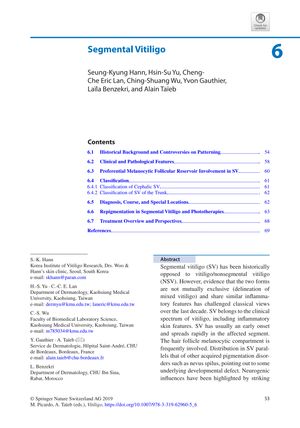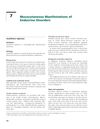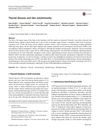Segmental Vitiligo: Characteristics, Treatment, and Prognosis
January 2019
in “
Springer eBooks
”
Segmental Vitiligo SV hair follicle melanocytes nonsegmental vitiligo NSV neurogenic factors sympathetic nervous system repigmentation melanocyte loss Poliosis hair depigmentation phototherapy Narrowband UVB NBUVB PUVA topical agents tacrolimus ointment leukotrichia epidermal grafting UV therapy tacrolimus

TLDR Segmental Vitiligo is a stable, early-onset form of vitiligo that responds well to early treatment and is ideal for repigmentation studies.
The document from 2019 examines Segmental Vitiligo (SV), a stable form of vitiligo characterized by early onset, rapid segmental spread, and often involving hair follicle melanocytes. It suggests that SV may share inflammatory features with nonsegmental vitiligo (NSV) and could be influenced by neurogenic factors, particularly the sympathetic nervous system. SV is considered an ideal model for studying repigmentation due to its stability and limited active melanocyte loss. The document reports that SV typically presents as a single lesion, with the head being the most common site, and is not strongly associated with other autoimmune diseases. Poliosis, or hair depigmentation, is more specific to SV, affecting about half of the cases. Treatment options for SV include phototherapy, with Narrowband UVB (NBUVB) therapy being more effective than PUVA, and topical agents like tacrolimus ointment. Early aggressive medical treatment is recommended, and stable SV with leukotrichia can be treated with epidermal grafting and UV therapy. The prognosis for early-stage SV is excellent.




